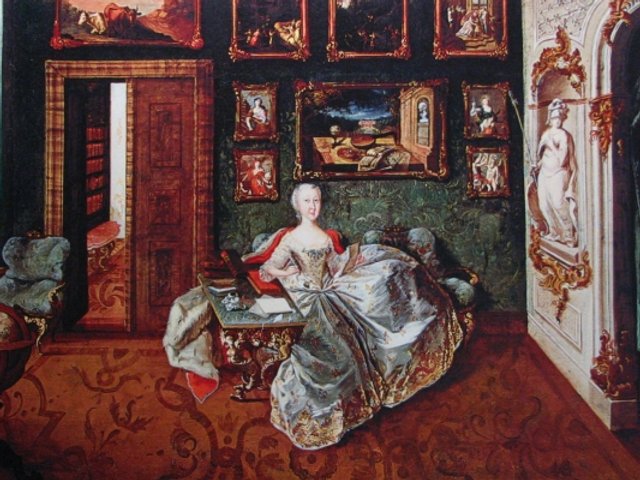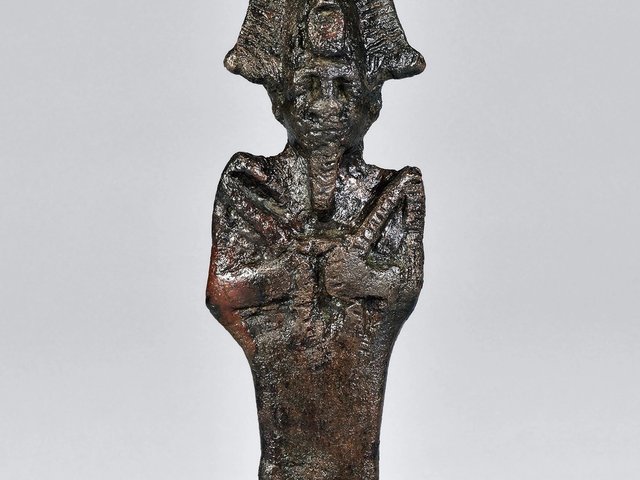The words “mon plaisir” evoke images of self-
indulgent court life in 18th-century Germany. Annette Caroline Cremer’s fascinating book illuminates one of the most unusual collections ever assembled in the Holy Roman Empire. Not content with the kind of large doll’s house that was fashionable around 1700, Auguste Dorothea von Schwarzburg (1666-1751) created a whole town: 2,000 dolls arranged in settings illustrating virtually every aspect of her life in a small Thuringian court.
It is tempting to dismiss Auguste Dorothea as a spendthrift minor aristocrat with too much time on her hands after the death of her husband in 1716. This is inaccurate in three ways. First, her husband Count Anton Günther II von Schwarzburg-Sondershausen zu Arnstadt (1653-1716) was the scion of an ambitious and distinguished Thuringian dynasty and was created prince in 1697. Auguste Dorothea, who styled herself Duchess Auguste Dorothea, was the daughter of the important north German prince and renowned collector Duke Anton Ulrich of Braunschweig-Wolfenbüttel (1633-1714).
Second, she began her project as early as 1690 and continued it until her death. The most intensive period was probably 1715-35. Third, the cost was modest compared with the 200,000 Reichsthaler her husband spent on the coin collection that precipitated his bankruptcy in 1712. Auguste Dorothea’s perennial shortage of money resulted from her husband’s profligacy and his brother’s refusal to honour the terms of the dower agreement after his death. Mon Plaisir was valued at just 600 Reichsthaler in 1751.
Much of the work—the making of clothes and the assembly of the dolls —seems to have been undertaken by the duchess herself and her entourage. Other tasks, such as the making of the dolls’ bodies or the creation of the cabinets and the individual rooms, were executed by court craftsmen. The finest beeswax heads were said to have been made by two Capuchin monks, and scenes of convent life were the work of Ursuline sisters at Erfurt. Local porcelain and faience factories were commissioned to make dinner services and domestic items for the displays.
Auguste Dorothea attached such significance to her collection that it was displayed in a gallery adjoining her own bedchamber on the piano nobile of the central section of Schloss Augustenburg near Arnstadt. There is no surviving catalogue or print showing it in situ, though Cremer is able to reconstruct the layout. The display cabinets were of variable size, some with elaborate roofs, others simple wooden crates, variously set up on fine console tables or plain stands. The dolls themselves ranged in height between 15cm and 35cm.
Cremer suggests that Mon Plaisir was Auguste Dorothea’s way of describing her life, a three-dimensional autobiography. Among those whom she inspired was Frederick, Prince of Wales who, according to Horace Walpole, resolved to build a “baby house” at Kew after a visit to the “Dowager Duchess of Brunswick”, when “he had become fascinated by her project to reproduce the entire court in miniature”.
The collection was neglected following Auguste Dorothea’s death. Schloss Augustenburg was sold for demolition in 1765; Mon Plaisir was entrusted to the Arnstadt orphanage and taken back only in 1881. Today 391 dolls remain, with around 2,000 miniature objects arranged in 80 rooms in 26 wooden boxes. The collection is displayed at Schloss Arnstadt (virtual tour at www.arnstadt.de/content/kulttour/monplaisir.html) and still offers a vivid impression of this astonishing life’s work.
Joachim Whaley is the professor of German history and thought at Cambridge University. He is a fellow of Gonville and Caius College and of the British Academy.
Mon Plaisir: Die Puppenstadt der Auguste Dorothea von Schwarzburg (1666-1751)
Annette Caroline Cremer
Böhlau Verlag, 518pp, €74.90 (hb).
In German only



